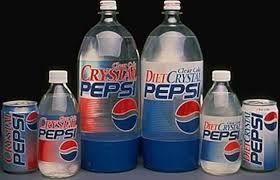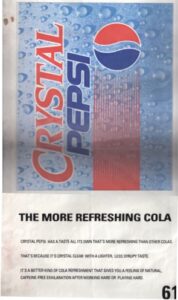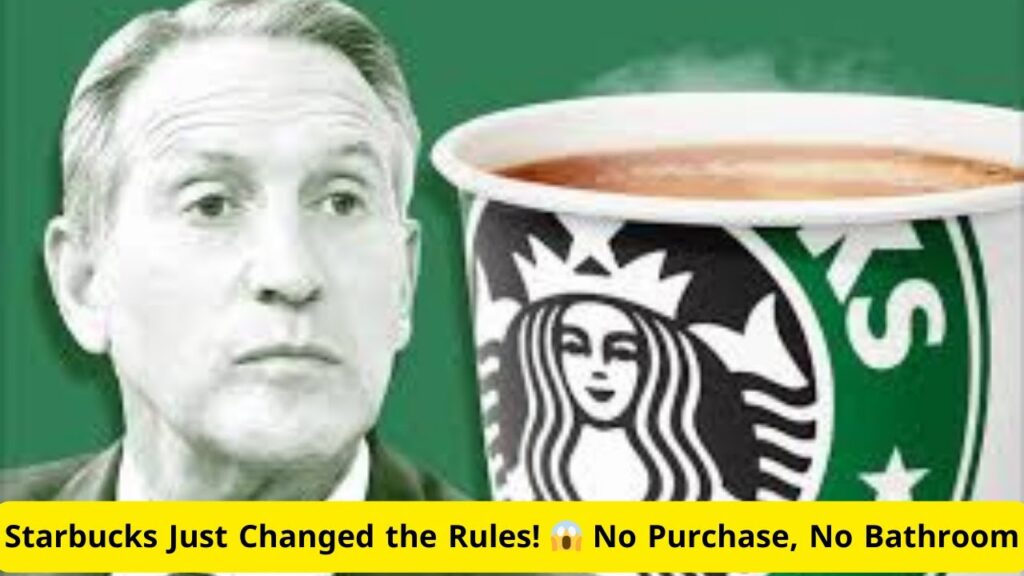When you take on a career in marketing you know there are going to be big ups and downs, or at least you should. Very little in this life is linear and predictable, especially in a world where we need to rely on collaborations with partners not always of our choosing to develop work, and then hope and pray that whimsical consumers will react according and grace us with their consideration.
With the rise of the entrepreneur and the technology boom of the past 30 years, it’s become chic to extoll the virtues of failure. If we don’t take big risks, how will we ever change the status quo? How will we ever learn?
Important life lessons or not, the feelings associated with failure are, unfortunately, never pleasant, whether they are closer to mild disappointment on one end of the spectrum or complete devastation on the other. I happen to be one of those people who loves to beat himself up over and over again when things go wrong. Whatever, happens, I always see to feel that it’s all my fault, at least at first. Time, reflection and self-examination do eventually lead to a certain degree of objectivity, though I always seem to take more than my share of the responsibility.
That’s not entirely bad. There are those who deny all responsibility, place the blame others and sweep failure under the rug. A perfect recipe for getting stuck in a miserable, lifetime rut.
But there those extremely rare times when things go off the rails and it’s not your fault, not at all. You know you’ve delivered, but events completely out of your control snatch defeat from the jaws of victory as you watch helplessly.
Which brings us to Crystal Pepsi, a product frequently cited as one of the most monumental marketing failures of all time. People still talk about it, even today, 22 years later, as in this MSN Money story, 5 Worst Product Flops Of All Time.
I played a central role in the development of Crystal Pepsi, and I can tell you that for all that has been written about this marketing debacle, no one has come close to getting it right.
The concept grew out of a project that my company (called Hirsch Marketing at the time) took on for the new products team in the Brand Pepsi group. That initial assignment was very broad: Create a wide range of new, cola based products under the Brand Pepsi umbrella.
Among the many 20 or more concepts developed was a “Clear Pepsi” concept, which was, in fact, inspired by the success of the new age soft drink Clearly Canadian that was basking in its 15 minutes of fame at the time. That’s the one part of the story that’s generally been reported accurately.
Here’s the concept, complete with the rain damage that occurred when my garage was flooded by El Nino rains in Los Angeles many years ago.
Several months later, after quantitative testing and internal discussions led to a consensus at Pepsi, the company re-engaged us to work on an evolved “clear” concept, now called Crystal Pepsi, that had been developed with another of their other innovation consultants. My company had considered and rejected that name in our first round of work to avoid confusion with a powdered drink brand called Crystal Light.
While Pepsi believed that a clear cola concept could be hugely successful, they had still not nailed down the positioning, or any reason for being other than “clear.” Test market results were promising, but management believed that Crystal was not performing up to its potential. They had been running an ad that essentially positioned the product against Perrier as a natural beverage with taste, but concluded that the context of a premium priced, trendy bottled water brand was too limiting for the brand. They had also failed to define the taste or the drinking experience.
We were charged with creating a broader Crystal Pepsi brand position that would promise more than “new age,” with success measured by quantitative test scores that would exceed Pepsi’s norms.
Indeed, our positioning concept turned out to be one of the highest scoring – I believe it actually was the highest ever – of any new product tested to date in the history of the company. Here is that concept, poorly scanned and equally as weathered.
We had come a long way from the original “Clear Pepsi” concept, a novelty item that wasn’t likely to thrive over the long-term, to something with far more substance. Cola, like chocolate or coffee, is a very complex taste. Consumers couldn’t even start to describe it in focus groups, despite their love for the flavor and lifetime of experience with it. But most agreed that the basic foundation of cola could encompass a wide array of appealing variations. Just as there is milk chocolate, dark chocolate, semi-sweet chocolate, white chocolate, chocolate with added flavors and countless other choices, cola too could have variations beyond original Coke and Pepsi.
Clear was never Crystal Pepsi’s reason for being. It was simply a product feature that supported a more important benefit: an entirely new, cola with “a taste all its own that’s more refreshing than other colas.” In addition to “clear,” other support points were “no preservatives,” “no caffeine” and “natural.” But again, brand positioning focused on a new cola taste, not just the borrowed interest of Clearly Canadian’s new age aura or any single product feature.
The “refreshing” aspect of Crystal Pepsi was especially important. Colas were not thought to be thirst quenchers on hot days or after physical activity. While we understood that some cannibalization of Brand Pepsi would occur, there were strong indications that the taste and drinking experience of Crystal Pepsi would generate a high level of incremental business. This product would provide a cola alternative to clear sparkling beverages and lemonade where none previously existed.
Pepsi was so confident and excited about the national launch of Crystal that it bought a 60 second slot on the 1993 Super Bowl and threw a big launch party at Universal Studios with an appearance by none other then the “Uh Huh Girls,” the iconic backup singers to Ray Charles in his famous ads for Diet Pepsi. Many other celebrities were also in attendance. I remember ordering a drink and running into Lawrence Taylor, the New York Giants Hall of Fame linebacker who had recently retired and been quoted as saying that he had overcome his addiction to cocaine by replacing it with an addiction for golf. I have to admit being a little scared standing next to this very large man as he pounded down scotch after scotch. Maybe because it was January, he had yet again shifted addictions, this time from golf to alcohol. I could not have been more pleased that he turned out to be very friendly and more than tolerant over my gushing about how much I loved the Giants and what a great player he was.
The Super Bowl ad, which can be seen here, generated enormous trial. Crystal Pepsi reached nearly half a billion dollars in sales in very short order. Attaining that level of revenue and being profitable were notable achievements for a “failure.”
But the bottom dropped out very quickly. It seemed that after trying the product, no one liked it. Repeat levels were dismal and panic set in. What could possibly have gone wrong?
No pun intended, but the explanation was clear to me as soon as I saw the spot. Despite spending over a million dollars on production, licensing one of the hottest songs from one of the hottest bands at the time, the spot was an exercise in self-indulgence on the part of the agency. They wanted to produce a great music video and they succeeded. It was a beautiful spot, but not representative of the creative brief.
The ad does say “different,” and at one point, “more refreshing.” It also shows, briefly, a cyclist and a shirtless man, presumably after a workout. But the ultimate consumer take-away, confirmed by subsequent research, was that Crystal was essentially clear Pepsi, the exact same taste delivered in a more natural, new age, no-caffeine form. The ad barely hinted at, never mind directly expressing, that Crystal Pepsi was a new, different, unique cola taste.
With the expectation that Crystal would taste no different from regular Pepsi, people were so unpleasantly surprised by their first taste that they didn’t care for a second. One focus group respondent summed it up perfectly. “I like coffee and I like tea. But if you give me tea and tell me it’s coffee, it’s going to mess with my mind. I’m just going to spit it out because it’s so different from what I expected.”
Sometimes “great creative” that departs from strategy does in fact succeed. I’m not a big fan of this approach, but if advertising leverages humor or some attention-getting device to make people sit up and take notice, positive sales results may follow. That’s not only a roll of the dice, but it can only work in situations where people are already familiar with your product, or conversely, if they have absolutely no preconceived notions of what it’s about. In the case of Crystal Pepsi, the advertising set up an expectation: this product tastes just like regular Pepsi while being clear and natural. The product simply could not deliver on that promise, because that’s not what it was.
It all might have been salvaged. We had identified the problem and there was a solution. An exercise we conducted in multiple focus groups across several markets was fascinating. Respondents were told that Pepsi understood the confusion and disappointment people were experiencing with Crystal, so the company had reformulated the product. Instead of the taste of regular Pepsi, the “new” Crystal Pepsi had “a taste all its own that was more refreshing than other colas.” We were simply reading the positioning statement. We then poured the existing Crystal product into clear plastic cups and let respondents sample it. Nearly all said, “Now that’s different! This is really good!”
A follow up ad that simply explained what the product really was could have stopped the precipitous decline and put sales back on the right track. But it was not to be. The Brand Director told me that the brand’s advertising budget was shot. They couldn’t afford another million dollars to produce a new commercial. I pointed out that a simple talking head commercial that could be produced for well under $50,000 would most likely do the trick, but she replied, “The agency would never do that.” It seemed that a million dollars was the ante to get the agency into the game. They were only interested in big productions.
This was shocking to me until a friend at Pepsi reminded me how their advertising function was virtually independent of brand management, who had little say about TV ads. There was a very powerful, internal advertising guru who had the ear of the CEO and may as well have been an agency employee. “Pepsi,” my friend explained, “was the only company where the agency is really the client and the client is the agency.” It was totally backwards, like Seinfeld’s Bizarro World.
Amazingly, we still see agencies accepting a creative brief and then returning with executions that bear little or no resemblance to the agreed upon strategy. And with a straight face, at that. I once developed a brand position and personality that was characterized by sharing, warmth and delight. The target was moms with kids living at home. Somehow, the agency translated this into a spot that featured adolescent humor and selfish craving, featuring family members fighting each other for the product.
There are most likely a number of explanations for this behavior of basically intelligent people behaving none too wisely. Clients may buy these way off strategy executions because they are intimidated by creative tasks in general, by their agencies or both. Some may feel that “great creative,” usually defined by the incredibly vague and subjective terms “cool” or “funny,” will be so “disruptive” as to command a disproportionate share of attention (we’ll go viral!) and go on to win the hearts and minds of consumers.
There are also many marketers with little or no sense of empathy, which is in my mind, the most essential quality for successful communications and marketing efforts. Often completely tone deaf when it comes to creative sensibilities and human insight, these marketing execs excel at process but have little feel for substance. They may even claim to have a “brand vision,” but the inability to distinguish the needs, wants and sensibilities of their target markets from their own gets in the way.
Clients may also be co-conspirators with agencies selling creative that is completely out of sync with strategy because they live in a world where CMO tenure is only about two years. They are under enormous pressure to make something happen now. So they talk strategy but engage in attention getting tactics in the hope that they score a quick win, rather than testing the patience of management with truly sound executions that build to more enduring, long-term results.
Regrets? Yes, I’ve had a few. I’m not sure which is worse, when I have no one to blame but myself, or when failure was completely out of my control. I suppose it’s more painful when I did everything right, developing deep, insight-based strategies that are truly proprietary, motivating and relevant. The kind of strategies that would have and should have provided a strong foundation for healthy growth, but are ignored or abandoned.
But now that I think of it, on balance, there’s not too much for me to regret about Crystal Pepsi. To be sure, it was a big opportunity missed from a mess not of my own making. Yet silver linings do exist. Of course, I would much rather prefer being associated with one of the biggest and best successful innovations of all time rather than being reminded, 22 years later, that I was a key player in a failed effort that is still perceived as one of the biggest marketing flops of all time.
Still, many of the people I worked with at Pepsi, one in particular, became lifelong friends. They have proved to be more meaningful and valuable to me than any marketing case history could ever have been. And business not only didn’t suffer as a result of that project, it thrived. Everyone working at Pepsi – those I worked with on Crystal and my many other projects there – eventually moved on to other companies. The great relationships built at Pepsi turned out to be a rich source of new projects, many in categories in which I had no prior experience. These included online retail, cable television, fast food, finance, pharma, health care and more.
The Crystal Pepsi experience taught me a lot about humility as well. I took way too much of the credit for “creating the product” when it all seemed to be a sure thing, huge success. I may have played an important role, but there were a lot of other smart, capable people who did as much or more. Once the brand crashed and died, all that inappropriate braggadocio seemed quite foolish to me. I suppose that’s the one true regret in all of this. I could have handled the success that was never to be with far more grace.
There are always rumors running around the Internet talking about how Pepsi is going to revive Crystal Pepsi. They shouldn’t. There’s just too much baggage attached to it. But despite the fact that both sugary and artificially sweetened soft drinks have reached that part of their life-cycles where they’ve set off on their long, slow declines, cola remains a hugely popular flavor. Sure, it may be 22 years later, but isn’t there still a lot of room for variations on cola? With variety seeking in food and beverage having gone mainstream, an explosion in the range of products now available and enjoyed by so many people, I would say now is a better time than ever.
What do you say, Pepsi, want to try again? I don’t know about you, but I have fully processed the life and marketing lessons from my clear cola experience. Time to put those lessons to good use.






